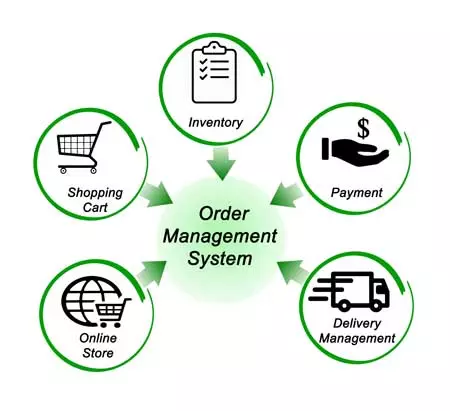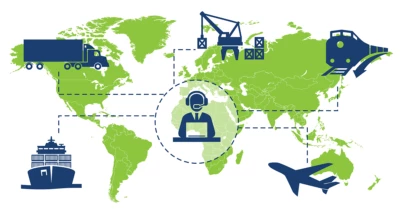How TMS Improve Supply Chain Visibility & Optimize Logistics
Supply chain visibility has become more critical than ever in the globalized economy. Companies are under constant pressure to streamline their logistics operations, reduce costs, and meet customer demands efficiently. One of the most effective ways to achieve this is through the use of Transportation Management Systems (TMS). These systems play a pivotal role in enhancing supply chain visibility by providing real-time data and insights that enable businesses to make informed decisions, optimize routes, and improve overall efficiency.
In this article, we’ll delve into how TMS improves supply chain visibility, how it integrates with logistics services, and how companies like Postalparcel have used TMS to resolve logistics challenges globally.

What is a Transportation Management System?
A Transportation Management System (TMS) is a software solution that helps businesses plan, execute, and optimize the movement of goods. It provides visibility into transportation processes, helping companies track shipments, manage delivery schedules, and handle freight payments efficiently. A TMS can also integrate with other systems such as warehouse management and enterprise resource planning (ERP) software to provide a complete view of the supply chain.
The core functions of a TMS include route planning, carrier selection, load optimization, and freight audit. By utilizing advanced analytics and real-time data, TMS solutions offer businesses the ability to track their shipments throughout the entire journey, from the moment an order is placed to its final delivery.
The Role of TMS in Enhancing Supply Chain Visibility
Real-Time Tracking
One of the primary advantages of TMS is its ability to offer real-time tracking of goods in transit. This enables businesses to monitor their shipments as they move through the supply chain, providing full transparency from origin to destination. With real-time visibility, businesses can anticipate delays, adjust routes, and optimize their logistics strategy on the fly. This capability helps reduce the risk of unexpected disruptions and ensures that customers receive their products on time.

For example, Postalparcel, a logistics service provider, uses TMS to offer real-time tracking and delivery updates to customers. With advanced tracking capabilities, Postalparcel has helped businesses maintain an uninterrupted flow of goods, even in the face of complex international shipping challenges. This level of visibility helps customers track their shipments in real time and provides them with accurate delivery time estimates.
Improved Decision-Making
Having access to accurate, real-time data empowers businesses to make better decisions regarding their logistics operations. TMS systems enable managers to analyze performance metrics such as delivery times, freight costs, and route efficiency. This information allows them to identify inefficiencies, reduce operating costs, and ensure that goods are delivered on time.
For instance, Postalparcel’s carrier management system allows businesses to select the most cost-effective carriers and optimize delivery routes based on performance data. By leveraging the insights provided by the TMS, Postalparcel has been able to improve the accuracy of delivery times and reduce transportation costs for its clients.
Enhanced Collaboration with Partners
Supply chain visibility is not limited to a company’s internal operations. TMS enables collaboration between various stakeholders such as suppliers, carriers, and third-party logistics providers. By sharing data across the supply chain, all parties involved can align their actions and work towards common goals. This results in more efficient planning, fewer delays, and better coordination.
For example, Postalparcel’s logistics services include inventory and order management, which seamlessly integrates with its TMS to enable real-time visibility of inventory levels and order statuses. This integration helps businesses manage their inventory more effectively and reduce the risk of stockouts or overstocking, ultimately improving the customer experience.

Increased Transparency
Transparency is a critical component of effective supply chain management. With a TMS, businesses can provide visibility into every stage of the supply chain, from the warehouse to the final delivery. This transparency helps build trust with customers, who can track the status of their orders and be notified of any delays or issues. Additionally, supply chain managers can access comprehensive reports on performance, helping them make data-driven decisions.
Postalparcel’s logistics services exemplify this transparency. Their delivery services are designed to keep customers informed at every step of the way, providing updates and alerts through an intuitive platform. This transparency has been especially beneficial in resolving delivery challenges across different countries, as clients can track shipments and stay updated on potential delays or issues.
Overcoming Logistics Challenges with Postalparcel
Streamlining Cross-Border Shipping
One of the most significant challenges faced by logistics companies today is managing cross-border shipments. The complexity of international regulations, customs clearance processes, and long lead times can create significant hurdles for businesses that operate globally. Postalparcel has successfully addressed these challenges by utilizing TMS to optimize cross-border shipping operations.

For instance, Postalparcel has helped companies navigate the complexities of shipping to and from countries with stringent customs requirements. By integrating TMS with their carrier management system, Postalparcel has been able to streamline the customs clearance process, reduce paperwork, and ensure that shipments are delivered on time. The result has been faster transit times and improved customer satisfaction for businesses that rely on international shipping.
Improving Last-Mile Delivery Efficiency
Last-mile delivery is often the most expensive and time-consuming part of the shipping process. Delays, inefficiencies, and missed delivery windows can significantly impact a business’s bottom line. Postalparcel has used TMS to enhance last-mile delivery by optimizing delivery routes and providing real-time updates on driver locations.
By leveraging real-time data and analytics, Postalparcel can track drivers’ movements, optimize delivery routes, and reduce fuel costs. This has led to faster delivery times and more accurate delivery windows for customers. Businesses that rely on Postalparcel’s delivery services have seen improved customer satisfaction, as their clients can track their shipments and receive timely updates.
How TMS Contributes to Long-Term Supply Chain Success
Implementing a TMS solution offers a range of benefits that go beyond just improving visibility. It enables businesses to achieve greater efficiency, reduce operational costs, and enhance customer satisfaction. By continuously monitoring performance and optimizing logistics processes, companies can ensure that they remain competitive in an increasingly complex supply chain landscape.

In addition, the ability to track shipments in real time, collaborate with partners, and make data-driven decisions positions businesses for long-term success. As companies expand into new markets and manage more complex logistics operations, the ability to scale their supply chain management systems will become even more critical.
Conclusion
Transportation Management Systems (TMS) have become a vital tool for improving supply chain visibility and efficiency. By providing real-time data, optimizing routes, and enhancing collaboration, TMS solutions allow businesses to stay ahead of the curve in a fast-paced logistics environment. Companies like Postalparcel, which offer comprehensive logistics services such as carrier management and delivery services, have successfully leveraged TMS to resolve complex logistics challenges in various regions.
As supply chain demands continue to grow, adopting a TMS will be crucial for businesses that want to maintain transparency, optimize their operations, and provide excellent customer service. With the right TMS in place, companies can navigate the complexities of modern logistics, improve supply chain visibility, and ensure a seamless delivery experience for their customers.
Industry Insights
news via inbox
Nulla turp dis cursus. Integer liberos euismod pretium faucibua








